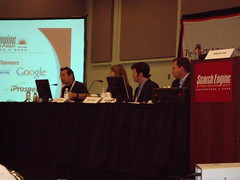Gone are the days of the whole family, ages 6 up to 50, sitting around in the evening watching the same television show, focusing in on the same characters and – consequentially – the same advertising messages. What a typical family evening looks like these days is the elementary age child playing hand-held video games, the teenager finishing homework online, and the parents reading the evening paper. And all of this is going on while each individual person is sitting in front of their own television set watching whichever show or video they want.
Multi-tasking has become a very popular group of activities, mostly practiced by those aged 16-24 (commonly called the Millenials). The Millenials are characterized in a marketing standpoint as those who search online while watching television while listening to their iPods. Or text messaging while driving while listening to the ads on the radio. Or any number of activities that can successfully be completed while completing other activities. You know what I’m talking about if you have teenagers, or are a Millenial yourself.
What this session, What is a Brand Vehicle? Integrated Marketing Together Forever, talked about first was how to break through the clutter and get into the brain of the person watching the advertisement on television or seeing a print ad in a magazine or newspaper. Because society now has exposure to so many forms of media, marketers need to integrate their offline and online advertisements to successfully accomplish their sales or traffic goals. And while most of this session discussed B2C (or Business to Consumer) messaging, there are some helpful hints that could be used when marketing B2B (Business to Business).
One of the panel’s suggestions was to begin showing website URLs on a television ad or within a print ad. This will hopefully draw consumers to the website for more information, where you can continue with your ad message to try to increase brand recognition and sales. An example given by Kelly Graziadei, Senior Director of Agency Development of Yahoo, were the recent Taco Bell commercials, using their tagline “Think Outside The Bun”. At the end of this television commercial, the tag line is shown and then slightly changes to ThinkOutsideTheBun.com, which gives viewers the option of going to the Taco Bell website for more information on their food, company and promotions.
Another way to increase is to make sure your online and offline messages are the same. Integrating messages throughout a campaign and taking into consideration the fact that searchers will be searching for these keyword phrases looking for your brand, you can increase traffic to your website, brand recognition and ultimately sales for your product.
One issue with this tactic is that maybe the message is getting clouded over from other media while trying to break through the clutter. A Millenial, or anyone else for that matter, may not remember the brand name, but could remember certain keywords or a basic idea behind the brand, and do an online search for those phrases. This emphasizes the importance of integrating ad phrase and keyword phrases throughout a campaign, whether it be in traditional offline media or online marketing. When someone wanting more information searches for a keyword phrase from your radio ad, but your website doesn’t rank very high on the search engine results page, that potential consumer could easily find the answers or products he or she is looking for from your competitors.
Other than making sure all your marketing messages are integrated successfully, one way to combat the problem of clutter and “noise” in the marketing mix is to rank for variations of your brand’s keyword phrases. Now, when someone searches for “running shoes” instead of “track shoes” (which is what you are specifically marketing for), the potential consumer will find your site, and not buy shoes from your competitors.
Robert Heyman, Chief Search Officer at MediaSmith, gave a great example of one basketball player, being the search engine of basketball. This basketball player is considered a lead-scoring player in the game. However, he is not given much respect by other players and teams. The reason behind this is that he gets the so-called “garbage points”, which are shots such as the rebounds or the tip-ins after a missed shot by another player. Bob says that search is like this player in the way that if someone is searching for a misspelling of a keyword phrase, the search engine will hopefully help you out and lead you to the correct keyword phrase. Or if you are searching on a broad topics such as “hats” you will find what you are looking for, but it will take you a while to get there.
The panel also stated that blended, or Google Universal, search was another good way to show online the integrated messaging of your offline marketing strategy. If a user is searching for you brand’s keyword, and a video shows up of a television commercial, an image shows up of a print ad AND your website comes up on the first page of results on Google for that keyword phrase, you are not only grabbing more of their attention and putting your brand name in front of the user in a variety of media, you are also taking up more of the first page of results so your competition for that same keyword phrase can’t be up there with you.
The general conclusion was that traditional marketing must integrate their offline messages with online messages, because potential consumers are going to be using search to gain more information no matter what they want the potential consumer to do. And breaking through the clutter and noise of other advertising may be difficult, but if you utilize search in a positive way, you will be found by consumers through the search engines.



